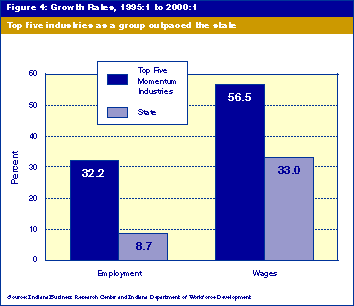Measuring Growth Momentum, Part III: Indiana's 'Big Mo' Industries
What are the high-growth industries in Indiana? This is a question that we attempted to answer in previous issues of IN Context using a new economic measure that we called growth momentum.
Growth momentum for a particular variable during a specific time period
is calculated by multiplying numeric change for that variable by the percent
change for the same variable during the given period. In the May
2001 issue, we identified 10 industries with high employment growth momentum
between 1995 and 2000. In the June 2001 issue, we applied the momentum approach
to identify 10 industries with high total wage growth momentum.
Let's put it all together. Figure 1 is a Venn diagram
that lists those industry sectors that appear in either or both high momentum
categories. A total of 15 industry sectors (at the three-digit SIC level)
were identified as ranking in the top 10 for either employment growth momentum,
wage growth momentum or both.
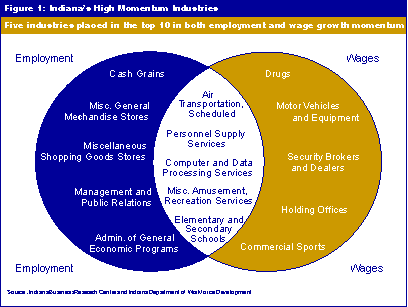
Examples of the types of establishments found in each of the three categories of growth momentum sectors can be found in Table 1. These industries vary widely in terms of their sizes, numeric growth amounts and percentage growth rates, but each of these industries grew substantially between 1995 and 2000 in both employment and wages.
Click on table to see larger version.
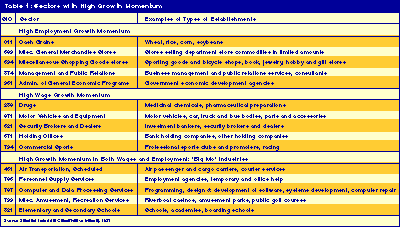
Figure 2 shows the relative size of employment in the five industry sectors that were identified as high growth in both momentum categories-our "Big Mo" industries. Figure 2 also displays the growth in employment between 1995 and 2000. The elementary and secondary schools sector is by far the biggest employer in the group; the smaller personnel supply service industry saw the largest numeric growth in employment.
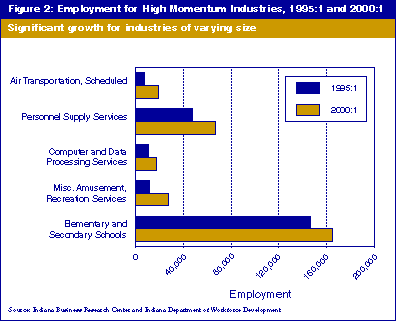
Figure 3 shows the growth rates for both employment and total wages for each of the big momentum industries. In both wages and employment, the fastest growth occurred in the amusement and air transportation industries. These industries also experienced large numeric gains in employment. Although the computer and data processing services industry had a relatively small employment gain numerically, the industry's employment growth rate exceeded 50%, and wage growth topped 125%.
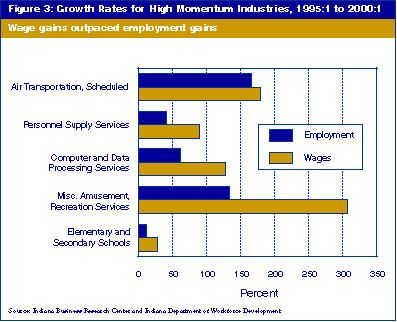
Considered together, these five "Big Mo" industries outpaced the state in terms of growth rates for employment and wages. Figure 4 shows that wage growth was almost twice the state figure, and the employment growth rate for this group was more than three times the rate for the state. Impressive growth in employment and wages has resulted in larger shares of state totals for this group. These five industries accounted for 10.3% of the state's employment and 8.9% of the state's wages in first quarter of 2000, up from 8.4% of state employment and 7.6% of state wages in the first quarter of 1995.
